A tire’s speed rating indicates the optimal speed that the tire can safely maintain over time. In short, it’s the fastest speed a tire can handle before it no longer performs as designed. The higher the speed rating, the better control and handling you’ll have at higher speeds.
The speed rating system was developed to help control the safe performance of tires at standardized speeds. A tire’s certified speed rating is given a letter from A to Z, ranging from 5km/h (3mph) to above 300 km/h (186 mph).
This rating system (see below) shows the top speed for which a tire is certified. It does not indicate the total performance capability of a tire.
The speed rating system used today was developed in Europe in response to the need to control the safe performance of tires at standardized speeds. When the rating system was originally developed, the "Unlimited V" category of over 210 km/h (130 mph) was the top speed rating possible.
As manufacturers developed bigger and better tires, it became necessary to regulate performance at standardized speeds to ensure safety. The "Limited V" category of 250 km/h (149 mph) was then created, and eventually the "Z" speed rating was added as the top speed rating. (Always consult the manufacturer for the maximum speed of Unlimited Z tires.)
You can find your tire speed rating in a number of places, typically in the owner’s manual, driver’s side doorjamb, glove box door, and gas tank hatch. Recent standardization has changed so all ratings except "Unlimited ZR" incorporate the speed symbol and load index as part of every tire’s service description on the tire’s sidewall. If you’re reading your tire sidewall, the speed rating will be the last item in the character sequence in the tire’s size code.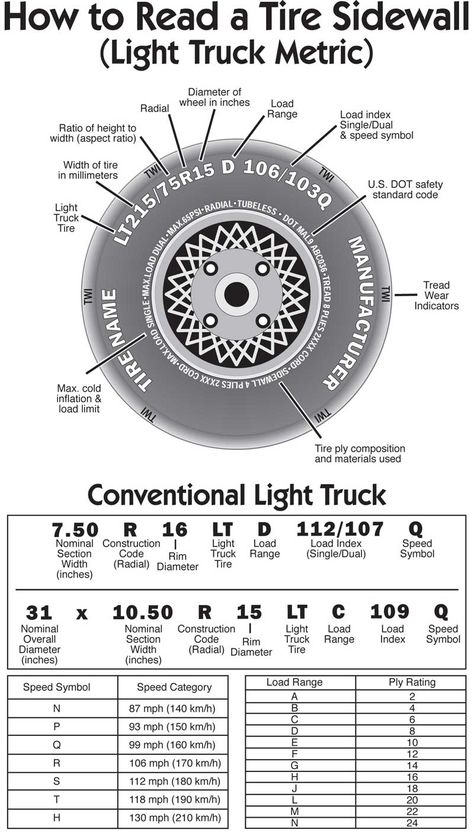 Below is an example of a the description on a tire’s sidewall: 2015/60R15 91V. Here, the tire would have a speed rating of V. V-rated tires can be driven at 149 MPH.
Below is an example of a the description on a tire’s sidewall: 2015/60R15 91V. Here, the tire would have a speed rating of V. V-rated tires can be driven at 149 MPH.
TIRE DESCRIPTION
| 205/60R15 91V | |
|---|---|
| 205 = Section Width in Millimeters | |
| 60 = Aspect Ration | |
| R = Radial Construction | |
| 15 = Rim diameter in Inches | |
| 91 = Load Index | Service Description |
| V = Speed Symbol | |
Tires having a maximum speed capability over 149 MPH may have “ZR” in the size designation. Tires with a maximum speed capability over 186 MPH are required to include “ZR” in the designation. Below are examples of tire sizes with a “ZR” speed rating.
ZR DESIGNATION
| EXAMPLES | |
|---|---|
| Tire Designation | Maximum Speed |
| P275/40ZR17 93W | 270 km/h (168 mph) |
| P275/40ZR17 93Y | 300 km/h (186 mph) |
For tires with a maximum speed capability higher than 240 km/h (149 mph), a "ZR" may appear in the size designation. Tires with a maximum speed capability higher than 300 km/h (186 mph), require a "ZR" in the size designation. Consult the tire manufacturer for maximum speed when there is no service description.
Tires with a maximum speed capability higher than 300 km/h (186 mph), require a "ZR" in the size designation. Consult the tire manufacturer for maximum speed when there is no service description.
TIRE SPEED CAPABILITIES
| SPEED SYMBOLS | ||
|---|---|---|
| Symbol Speed | Speed (km/h) | Speed (mph) |
| A1 | 5 | 3 |
| A2 | 10 | 6 |
| A3 | 15 | 9 |
| A4 | 20 | 12 |
| A5 | 25 | 16 |
| A6 | 30 | 19 |
| A8 | 40 | 25 |
| B | 50 | 31 |
| C | 60 | 37 |
| D | 65 | 40 |
| E | 70 | 43 |
| F | 80 | 50 |
| G | 90 | 56 |
| J | 100 | 62 |
| K | 110 | 68 |
| L | 120 | 75 |
| M | 130 | 81 |
| N | 140 | 87 |
| P | 150 | 94 |
| Q | 160 | 100 |
| R | 170 | 106 |
| S | 180 | 112 |
| T | 190 | 118 |
| U | 200 | 124 |
| H | 210 | 130 |
| V | 240 | 149 |
| W | 270 | 168 |
| Y | 300 | 186 |
Need help understanding the speed rating on tires? Our technicians have got you covered.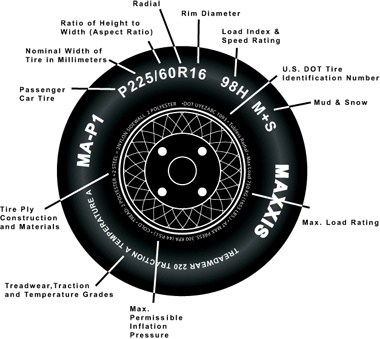 Bring your vehicle by your local Tires Plus and we’ll help you understand your tire numbers, tire size, and more!
Bring your vehicle by your local Tires Plus and we’ll help you understand your tire numbers, tire size, and more!
{{storeNumber}}
{{storeName}}
{{link-icon "Call Us" mobileCallLink null "call-cta"}} {{link-icon "Directions" directions "_blank" "directions-cta"}}
{{address}}
{{city}}, {{state}} {{zip}}
{{#if activeFlag}} {{#ifCond mystore "or" myPreferredStore}} {{#ifCond storeType 'eq' "TPL"}}
*Call store for appointment {{phone}}
{{else}} {{#if onlineAppointmentActiveFlag }}
{{#if myPreferredStore}}
{{else}}
*Call store for appointment {{phone}}
{{/if}} {{/ifCond}} {{else}} {{#ifCond storeType 'eq' "TPL"}}
*Call store for appointment {{phone}}
{{else}}
Schedule Appointment {{#if onlineAppointmentActiveFlag}} {{else}}
*Call store for appointment {{phone}}
{{/if}}
{{/ifCond}} {{/ifCond}} {{else}}
*Temporarily Closed Due To: {{temporarilyClosedReason}}
{{/if}} {{#if isMilitaryStore}}
*This location is on an active US military base.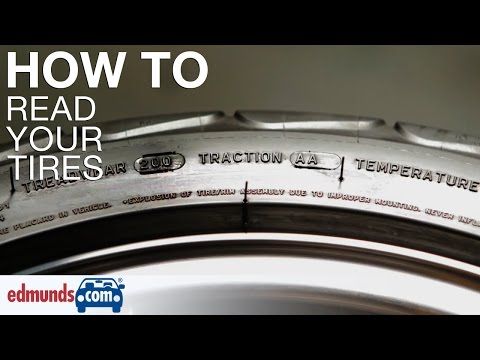 You may need military ID to access the location.
You may need military ID to access the location.
{{/if}}
With nothing but an open road in front of you, it’s easy to press the gas pedal down a little more than normal.
Some people take a relaxed approach to travel, while others just want to get to their destination. Getting there as quickly as possible becomes the primary goal.
However, your tire speed rating can play a major part in how fast you can safely drive during your adventures. Today, we’re looking at why you should know the speed rating for your tires before hitting the road. Let’s get started!
Watch this video on YouTube
The tire speed rating is the maximum mph a tire can maintain while functioning correctly. The manufacturer sets this recommendation to help increase the tire’s life and reduce the risk of a tire failure. The faster a tire travels, the more heat it produces.
The faster a tire travels, the more heat it produces.
Excessive heat can cause the tire to break down prematurely.
Tires with a higher speed rating will often provide better handling, especially at higher speeds. However, these tires aren’t always the best option as they offer a less comfortable ride and less performance in cold conditions and have a much shorter tread life.
Don’t drive above your tire speed rating.Tire speed ratings are mostly in alphabetical order. It surprises many to discover that H and V are next to each other on the rating system. Speed ratings were first introduced in the 1960s and only used S, H, and V ratings.
Technology advanced quickly, which resulted in new speed ratings being added to the system. Both H and V ratings kept their original rating numbers of 130 mph (H) and 149 mph (V).
Sports sedans and coupes often use H-rated tires. However, if you’re driving a sports car, you’ll be more likely to choose a V-rated tire.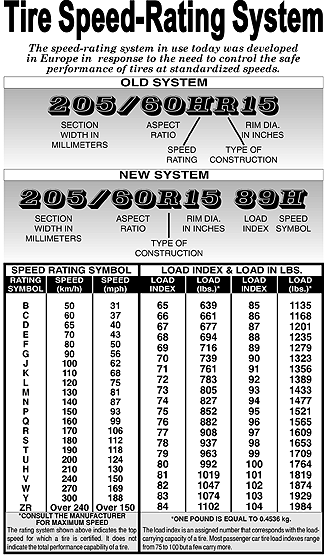 Both of these tires have some of the highest speed ratings available. Make sure you check your vehicle manufacturer’s specifications to make sure you get the correct rated tire for your vehicle.
Both of these tires have some of the highest speed ratings available. Make sure you check your vehicle manufacturer’s specifications to make sure you get the correct rated tire for your vehicle.
Pro Tip: Avoid RV tire blowouts with these 7 Tips to Prevent an Awful Accident.
Manufacturers often discourage mixing speed ratings on a vehicle. Different speed ratings provide different benefits, including traction and control.
Having tires of different ratings can cause handling issues, especially during wet conditions. If you have to mix tires, you should always follow the rating of the lowest-rated tire on your vehicle. Just because 3/4 of your tires are V-rated tires, you should still obey the H-rated tire limits.
Different speed ratings provide different benefits.Despite being substantially further in alphabetical order, T-rated tires have a lower speed rating than H-rated tires. An H-rated tire has a maximum capability of 130 mph, but a T-rated tire falls behind at 118 mph.
An H-rated tire has a maximum capability of 130 mph, but a T-rated tire falls behind at 118 mph.
H-rated tires are typically found on sportier vehicles, whereas a T-rated tire is more likely to be on family sedans and minivans. Which tire is better is primarily determined by how you’ll be driving. You’re not likely to drive a minivan in the same manner that you would a sports car.
So you don’t need quite the same level of handling and control that you would need in a sports car.
Exceeding the speed rating of your tires is never a good idea. However, simply exceeding the rating for a second isn’t likely to cause tire failure. Tire failures typically occur after prolonged exposure to speeds above the recommendation.
Tires generate heat as they roll down the highway. The faster the tire goes, the more heat it generates due to the friction between the tires and the road. As your tires heat up, tread separation and blowouts are more likely to occur.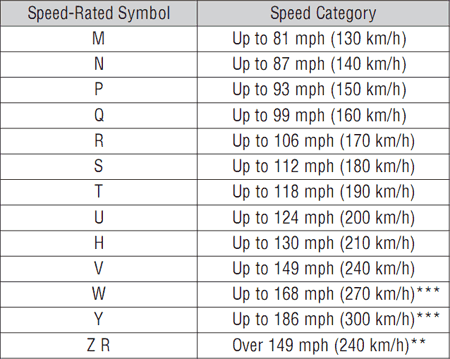 This can cause you to lose control, creating an unsafe scenario for you and other drivers.
This can cause you to lose control, creating an unsafe scenario for you and other drivers.
Pro Tip: Proper maintenance is key to keeping your RV tires working well! To learn how to protect them we uncovered Do You Need to Rotate RV Tires Regularly?
Always know your tire speed rating before you hit the road.Many tire speed ratings far exceed the posted speed limits on highways and interstates. However, speed ratings also give a good indication of a vehicle’s handling and traction capabilities. If handling and performance are essential, you’ll want to look further into the alphabet.
If you’re planning to tow a trailer, knowing the tire speed rating of your trailer is vital. Trailer tires are often more capable of carrying weight than going fast. Many trailer tires come with ratings as low as 65 mph. Those oblivious to the speed rating may hop on the interstate, set the cruise control at the posted 70 or 75 mph, and experience a tire failure several miles down the road.
Experiencing a tire failure is never a fun experience. They can cause thousands of dollars in damage and leave you stranded on the side of the road. Knowing your speed rating does matter and is very important to avoid a sticky situation.
Watch this video on YouTube
The lifespan of a tire depends on many factors. It’s important to consider where you’re driving, the quality of the tire’s materials, and how you’ll drive on them.
Some tires can easily go for 50,000 or 60,000 miles, but the National Highway Transportation Safety Administration recommends replacing tires every six years.
No matter the rating of your tires, make sure you’re regularly inspecting them to keep you and your fellow drivers safe on the road.
Do you know the speed rating of your tires? Tell us in the comments below!
To be honest with you, we hate paying for camping.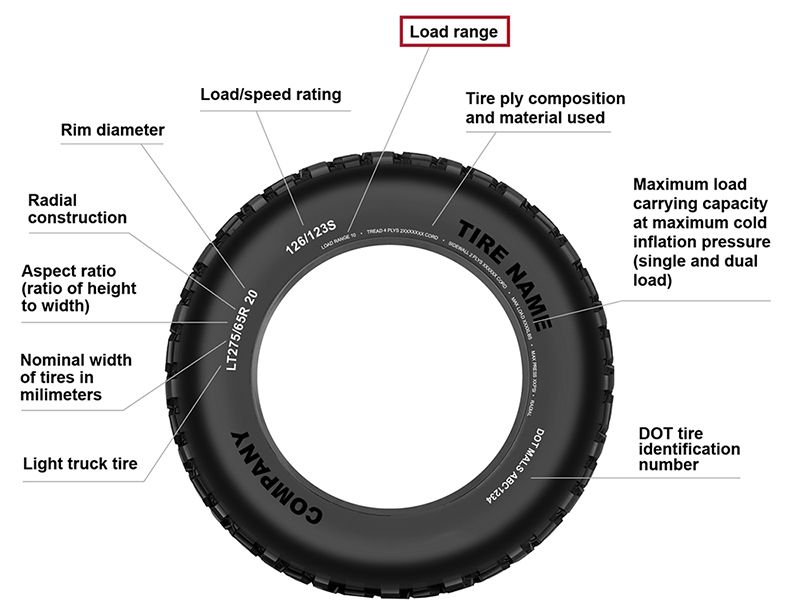 There are so many free campsites in America (with complete privacy).
There are so many free campsites in America (with complete privacy).
You should give it a try!
As a matter of fact, these free campsites are yours. Every time you pay federal taxes, you’re contributing to these lands.
Become a FREE CAMPING INSIDER and join the 100,000 campers that love to score the best site!
We’ll send you the 50 Best Free Campsites in the USA (one per state). Access the list by submitting your email below:
Please enable JavaScript in your browser to complete this form.Email *
Like Loading...
Load index (it is also the index of carrying capacity or bearing capacity) - this is the name of the maximum allowable weight, under the pressure of which the tire is able to function normally. This indicator is especially important for owners of trucks, since the weight of their cars is constantly changing and can reach huge values.
To increase the load index, tire manufacturers are using stronger materials and reinforcing the roll.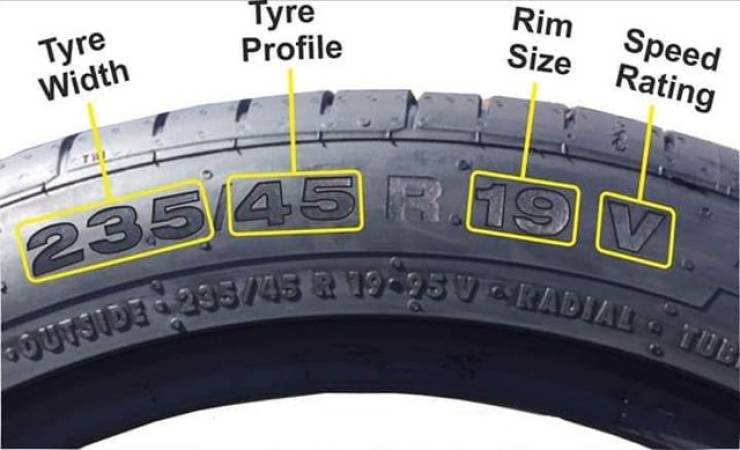 Rubber becomes more stable, but its rigidity inevitably increases. This means that the higher the load index, the less comfortable the ride will be. Hard rubber not only absorbs worse, but also creates a rumble while driving. The only way to make driving a car more comfortable is to take tires with a lower load index. In this case, the owner will no longer be able to transport the previous amount of cargo, but the car will move more smoothly, and the pressure on the suspension will decrease.
Rubber becomes more stable, but its rigidity inevitably increases. This means that the higher the load index, the less comfortable the ride will be. Hard rubber not only absorbs worse, but also creates a rumble while driving. The only way to make driving a car more comfortable is to take tires with a lower load index. In this case, the owner will no longer be able to transport the previous amount of cargo, but the car will move more smoothly, and the pressure on the suspension will decrease.
In order to avoid confusion, global tire manufacturers use a single index table in the manufacture of tires. The smallest load index among the existing ones is 0. It corresponds to an indicator of 45 kilograms. This means that a tire with this index is able to withstand loads up to 45 kilograms. The maximum index is 230 with a corresponding figure of 33,500 kilograms.
These figures represent optimal values, not limit values. For example, if the load index of a tire corresponds to five hundred kilograms, then this does not mean that with a load of 600 kg the tire will be torn apart.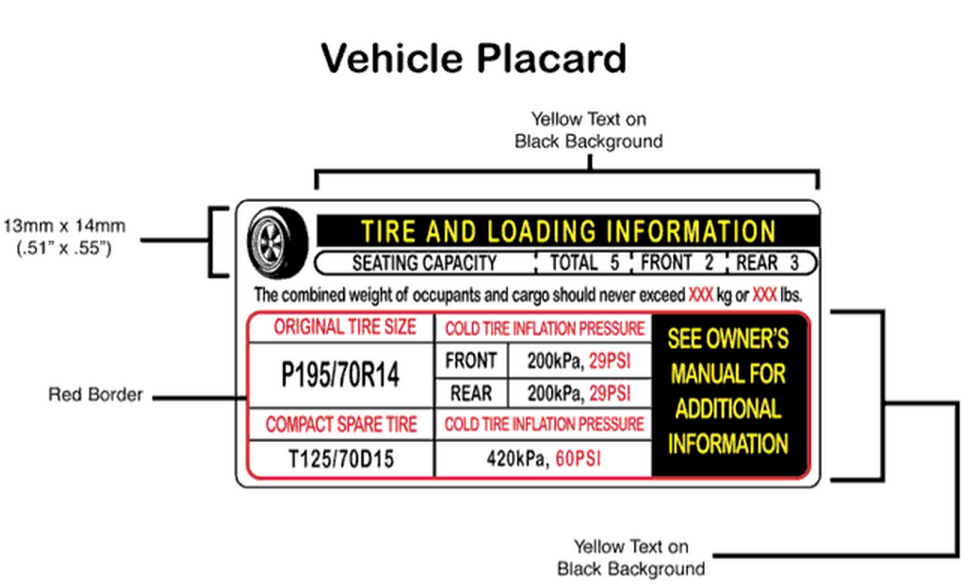 From time to time it is permissible to exceed the recommended load by twenty to thirty percent. But when buying tires, you should focus on the recommended value, which, along with the speed index, is indicated in the technical documents of any car.
From time to time it is permissible to exceed the recommended load by twenty to thirty percent. But when buying tires, you should focus on the recommended value, which, along with the speed index, is indicated in the technical documents of any car.
The load index is not the only indicator by which one can judge the bearing capacity of a tire. There is also the concept of ply rating or PR (from the English “ply rating”). The higher this figure, the greater the load the tire can withstand. For example, for passenger cars, the ply rate is in the range from 4 to 6 PR, and tires with a PR value of 6-8 are usually installed on minibuses or small trucks. For large-sized vehicles, like agricultural machinery, tires marked "Reinforced" (literally - "reinforced") or XL are used. This tire has the maximum ply and is able to withstand the heaviest loads. An alternative option is the sign "C", that is, "commercial". It is put on tires for vehicles with a large load capacity.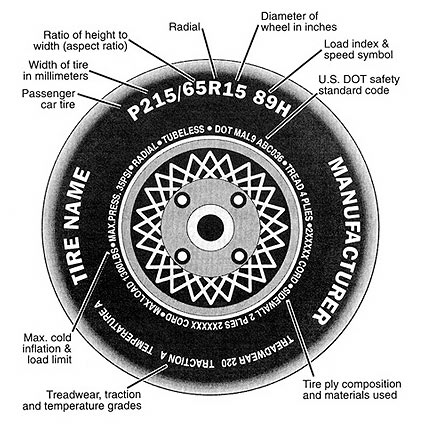
And yet, the ply rate, as an indicator of the optimal load, is imperfect. Tires of different sizes with the same ply rating are able to withstand completely different loads, so ply rating is not an independent indicator. Today, tire manufacturers use it less and less and indicate the load-bearing capacity on the sidewall.
Sometimes, in addition to the load index, the manufacturer indicates the maximum permissible load in kilograms. To recognize it, you need to find the inscription “max. load" followed by a number.
It is important to note that the limit load rating is always per tire. To calculate the coefficient for a car, you need to multiply the value by four.
The bearing capacity coefficient is related to the speed index discussed at the beginning. For example, the 80R marking means that the recommended speed for the tire is 170 km / h, and the maximum load is 450 kilograms. But after all, the load on the tire is directly proportional to the speed: the faster the car moves, the higher the load on the tire. To avoid confusion, on each tire, manufacturers indicate the load factor for the maximum allowable speed. In the example above, a load of up to 450 kilograms would be allowed at a speed of 170 km/h. If you go slower, then you can take more cargo. The reverse is also true: if the pressure on the wheels is reduced, the recommended speed limit can be exceeded. There is a formula: five percent weight reduction allows you to increase the maximum speed by 10 kilometers per hour.
To avoid confusion, on each tire, manufacturers indicate the load factor for the maximum allowable speed. In the example above, a load of up to 450 kilograms would be allowed at a speed of 170 km/h. If you go slower, then you can take more cargo. The reverse is also true: if the pressure on the wheels is reduced, the recommended speed limit can be exceeded. There is a formula: five percent weight reduction allows you to increase the maximum speed by 10 kilometers per hour.
All technical information about the tire is printed on its sidewalls. The name of the manufacturer, model, type of cord, country of manufacture and other data are noted there. Among other information, there is always a block of information on the sidewall, which is called the standard size. Let's take size 185/75R14 82S as an example. Here 185 is the width of the tire in millimeters, 75 is the height in millimeters, R is the type of tire (in this case, radial, but can also be diagonal and denoted by the letter D or diagonally belted and denoted by the letter B), 14 is the rim diameter in inches, 82 - load index (475 kilograms), S - speed index (180 km / h).
Twin tires are sometimes used for large trucks. The limit load coefficient for each tire in a pair may vary, and in this case, the load index is indicated for each tire separately, through a fraction.
(in - load index, kg - weight in kilograms)
Tires are, without exaggeration, one of the most important active elements of car safety. They are always in operation, they are always loaded not only with the mass of the vehicle, but also with the road profile, they are especially important while driving, but they perform the functionality assigned to them even when the car is stationary. It is difficult to overestimate their contribution to safety, but almost all motorists underestimate their qualities.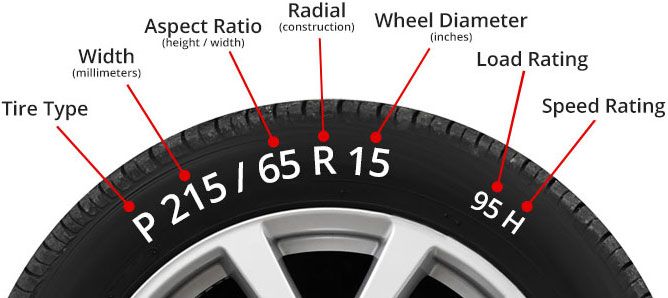 And very in vain. So close to the accident.
And very in vain. So close to the accident.
There are a lot of good articles on tire marking on the Internet. Explanation of various designations, which include various parameters that tell the buyer from the direction of installation of the tire, date of issue and model, to maximum pressure, tire design, tire type (“winter”, “summer”), its dimensions and, of course, the index speeds and loads:
We will just discuss the last two indicators now.
The summer season is about to begin. Soon, strings of owners of suburban property will stretch out of town. Many are in cars. Spring is a very important time of the year for a thoughtful gardener and gardener, and the house needs cosmetic repairs after the cold season. So it turns out that cars moving from the city on weekends are often loaded to the very roof.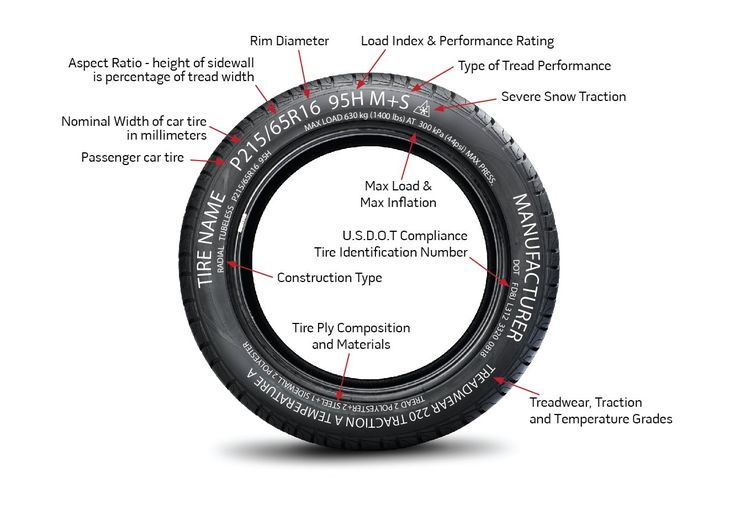 It happens that people do not know the measure and overload their cars.
It happens that people do not know the measure and overload their cars.
Overloading has an extremely negative effect on the entire structure of the vehicle, but tires suffer the most because of it (heavy truck drivers know this firsthand). If the metal can survive such a mockery several times a year (the body will definitely not lead), then the tire can be damaged at any time, and, worst of all, even a new one. After all, the load is exceeded, which means that the manufacturer no longer gives you any guarantee that the worst will not happen.
Tires start to get very hot, cracks along the bead ring, tire sidewall ruptures, hernias (bulges on the tire bead), damage to the tire cord may appear.
The result in this case will be very unpleasant.
If you're lucky, the tire will simply break down after a few seasons (less than its intended life) and you will throw your money in the trash (That's why it will soon be impossible to buy tires).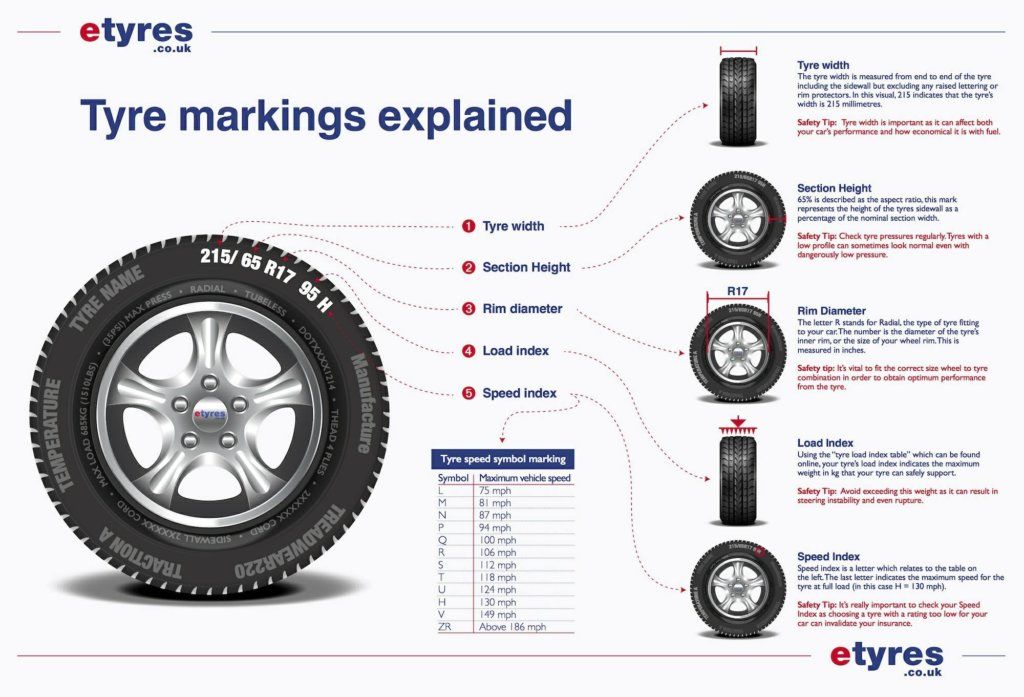
In the worst case, the tire will break on the road. It is unlikely that the wheel will explode, but it can be quickly lowered due to damage. A particularly dangerous scenario involves damage to one of the front wheels.
The answer is, of course, obvious - do not overload the machine. The manufacturer writes the load index for their products, here is the transcript in the table:
If you think that you will not be able to exceed the maximum kilograms, think again at the moment when, having seated four passengers in the cabin, stuffing the trunk with tools and luggage needed for the house, and also throwing several suitcases onto the roof (if you are a true summer resident , then you probably have a roof rack) you will get something like this:
In this case, you should split the transportation of things into several trips.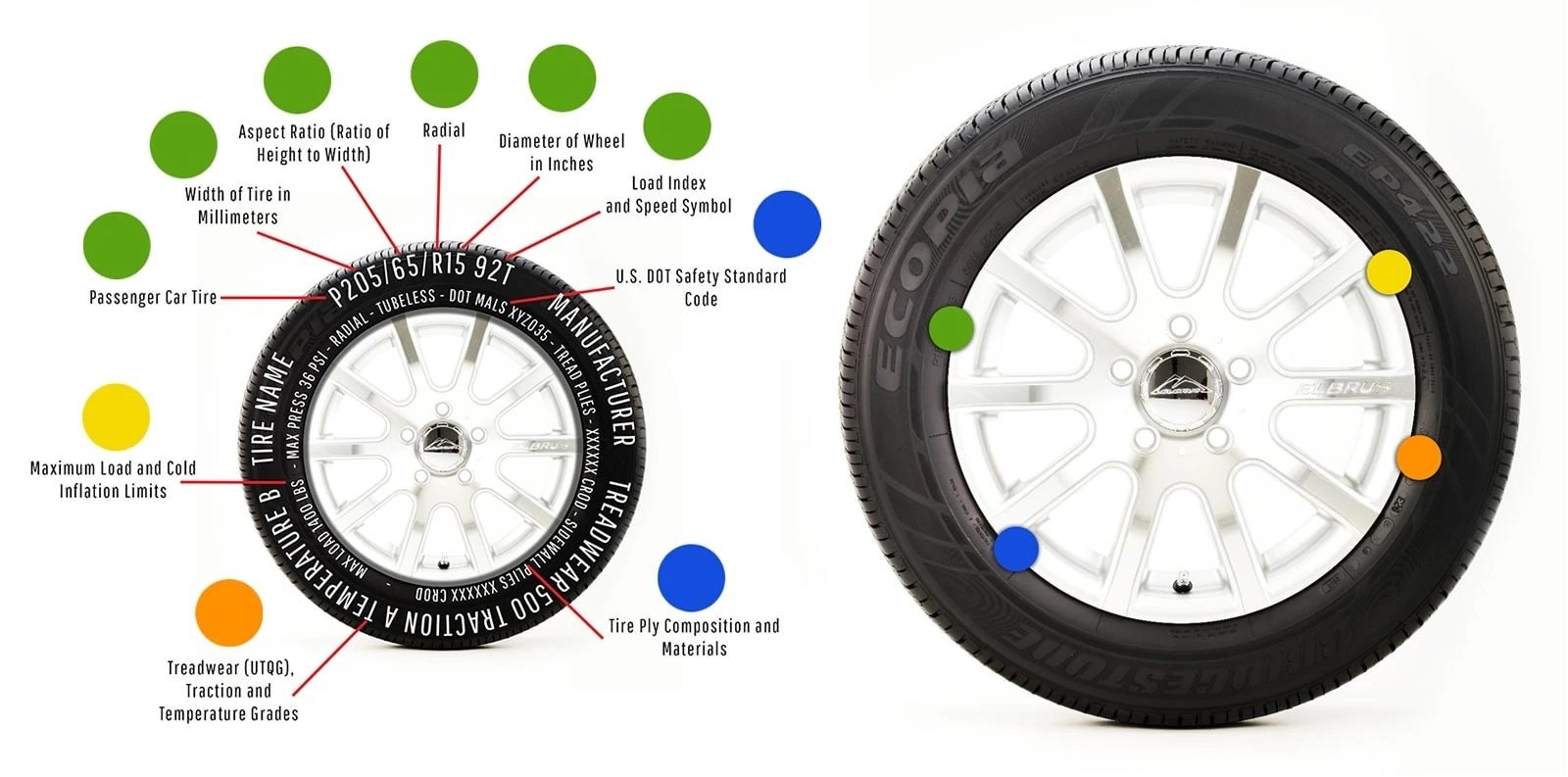
In other words, if you see that the suspension has sagged, and the tires at rated pressure have flattened a little in relation to how they were without load, there is a possibility of an overbalance.
And if expensive, high-quality tires are likely to be able to pass this torture without loss, then more budget narrow tires may well collapse due to excessive load.
Therefore, evaluate the car load soberly.
The second no less important index is the maximum speed indicator:
The indicator is important for the second category, which usually wakes up after hibernation - "racers", well, or street racers, as they like to call themselves. Young people who love high speeds, tuning and adrenaline.
Next to the tire size, the speed index is also marked on the side of the tire. It is denoted by a Latin letter, from A to Z. Accordingly, the initial letter of the alphabet indicates the lowest speed, the last - the highest. Thanks to the table, you can find out the decoding of the speed value.
Accordingly, the initial letter of the alphabet indicates the lowest speed, the last - the highest. Thanks to the table, you can find out the decoding of the speed value.
1. It is important not to make a mistake with the speed index when buying. Do not be lazy to look at it on the sidewall of the tire. Not necessarily a wide tire with a low profile will have a high speed index. Especially some Chinese manufacturer. It is important to understand what materials it is made of, hence its strength will be understood.
Remember that the forces acting on the rubber while the car is moving are catastrophically huge. They grow in geometric proportion with a set of speed and it is absolutely impossible to neglect them!
2.Add 15 km/h to your vehicle's top speed when choosing a tire.